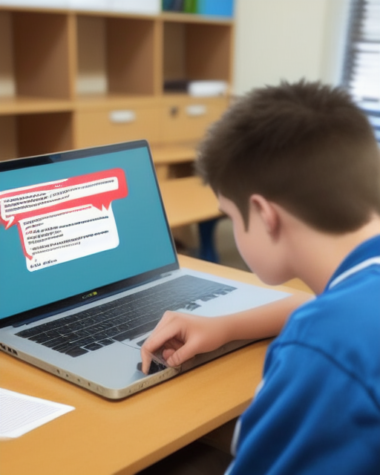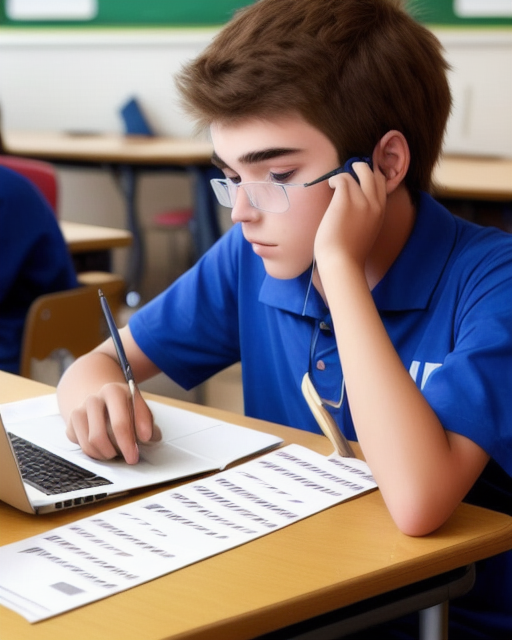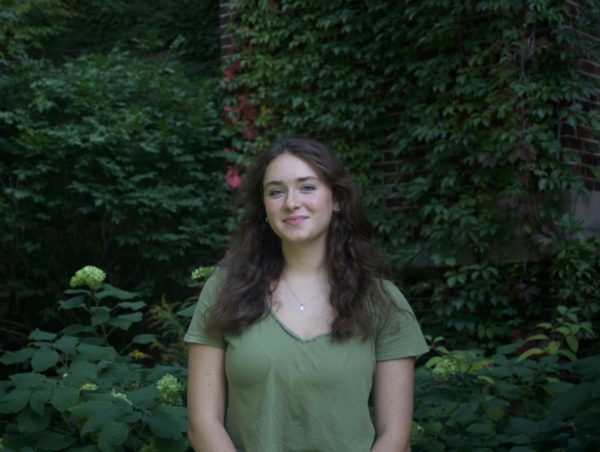Chat CheatPT?
New AI raises questions of academic integrity, forces teachers reassess assignments, assessments
April 20, 2023
In the present day, there is the constant stream of technological advancements being introduced to society. The Artificial Intelligence (AI) wave is one that many fear, but also one many surf along with. Chat GPT has been one of these cases and specifically targets student written work.
Chat GPT refers to a chatbot built with the use of GPT (Generative Pre-trained Transformer) language model. GPT is a type of deep learning algorithm that is capable of generating natural language text by predicting the most probable next word in a sentence based on the context given. Chat GPTs are commonly used as chatbots because they can hold intelligent conversations with human users and provide information or assistance. Chat GPTs can also provide students with access to a wide range of information in English, which can help improve their reading and comprehension skills.
I didn’t write any of that last paragraph, Chat GPT—this new artificial intelligence, the newest version of which was released by OpenAI on March 14—did. Not an amazing description of what the program is and how it works, but it gets the job done. This new artificial intelligence, released by OpenAI software, has taken the globe by storm.
This concerningly accurate chat bot has educators worried for their classrooms as students begin to realize its capabilities.
The chatbot can be used to write anything from essays and research papers to reviews. Basically, whatever you tell it to write, it can do.
The New York Times even released an article testing if readers could discern whether a piece was written by a fourth grader or Chat GPT. Many readers were disappointed and shocked to learn that they could not accurately determine by who it was written by.
The primary question is how this advanced technology will affect the schooling of future generations, particularly the courses that are writing heavy in nature.
Chat GPT was introduced in November 2022, but didn’t start spurring legitimate controversy in educational spaces until the early months of 2023, when educators couldn’t ignore it any longer.
“My first reaction was to laugh, and my next reaction was ‘It was only a matter of time,’” English teacher Elizabeth Hartley explains.
Staff at ETHS immediately began discussing Chat GPT in department meetings, startled by its unforeseen introduction.
“[My mindset just shifted] from ‘This [technology] is gonna radically transform what we do here [at ETHS] to this [might] incrementally transform,” English teacher Joshua Brown tells. “I think as teachers, we tend to overreact. Sometimes, we just have to scale back and start to think about how things need to change.”
Putting this into practice, Hartley has started to alter certain aspects of her classroom to maximize productivity and success.
“After this first blew up in January,” Hartley says, “my student teacher [and I] re-crafted our whole sophomore argument essay assignment to make it entirely in-person; hard copy, paper and pencils.”
While students expressed frustration with the new form of the assignment, Hartley claims it was necessary, to ensure that she receives authentic work from her students.
Brown modified his classroom culture in a slightly different manner, targeting the motivation of students.
“You can ask Chat GPT to write a story about a personal anecdote from when you were younger and it’ll be weird,” Brown shares. “If I ask my students to [write] about meaningful things, they don’t want to copy [what the AI generated].”
The practice of creating assignments that students are driven to complete rather than what they are forced to submit guides them away from using the chatbot. English teacher Al Dell Otto agrees with this strategy.
“I have always tried to [propose] really specific problems that would be really hard for anyone but the student to answer,” Dell Otto explains. “[Offering assignments that are] specific to what we’re reading [and are]specific community concerns that relate to [one’s] own life are really hard to duplicate.”
Now, Chat GPT is not the first software to spark the worry of disorder in educational spaces. Technology is constantly growing, and so education systems have had to adapt before.
Hartley was involved in the group to pilot the Chromebooks, which issued a massive shift at ETHS.
“The biggest sort of tectonic shift was moving to one-on-one Chromebook learning,” Hartley suggests. “That immersion was a learning curve [even though] I agreed to pilot the devices from the very beginning.”

While the implementation of Chromebooks fall under a more overarching theme of technology evolution, Chat GPT is no exception to this reality.
For instance, PhotoMath was an app that grew in popularity when it was released back in 2014.
“We have [a] parallel in the math department. [Students are familiar] with the app that looks at an equation and solves it,” Dell Otto says.
With these types of answer generators, there is always curiosity that coincides.
“I think that some [students] aren’t necessarily using [Chat GPT] to cheat but just for reassurance or maybe out of curiosity,” Brown explains.
As Brown suggests, junior Giles Gilbert Bartell spoke to how he uses “it for fun because the chatbot gives really funny responses if you have a conversation with it. I don’t use it for school but I just think it is an interesting thing that we have technology wise.”
Hartley understands the intrigue as well.
“Why not? It’s new. It’s different. I think if I were a kid, I would probably try and turn in a chatbot paper, just to see what happens.”
There is an inherent pressure built into academic spaces that lead teachers to fear whenever new technology arises. Students want to find success in the classroom, and that can mean some students going to extreme lengths.
“Everyone’s got their motivations. It has a lot to do with pressure and the way the educational system is set up to be competitive in different ways,” Brown tells. “[Students] understandably want to take shortcuts, and until we deal with that issue, there will always be some pressure to cheat. Not to say [that] cheating is [justified], but it makes me [aware of] the motivation that leads someone to [use it].”
There is also the issue of time management, more specifically procrastination: a global trend among students. Everyone at some point in their lives has felt this ticking pressure, which is something that Chat GPT can relieve.
A student* suggests that “Sometimes, I am just too busy to complete long assignments and it only takes about 5-10 minutes to complete [it] with Chat GPT.”
As an English teacher, Dell Otto has seen this scenario play out countless times.
“When you’re up against a deadline or when an assignment is already late, you’re really at crunch time. It’s pretty easy to be tempted by something that will produce the work for you. I think it’s natural to look for resources that help us do things more efficiently, so I don’t fault students for that.”
Additionally, student reliance on the AI may stem from an insecurity with their writing capabilities.
“I think a lot of students are intimidated and feel a lack of confidence in their own writing,” Dell Otto elaborates.
English teachers are accustomed to read through individual student work. Over time, they tend to get a sense of how each student writes, as everyone has a unique style.
“I’ve had several submissions from students of AI generated work. I’m navigating that with individual students on how to deal with [it]. It’s taking more time to grade and give feedback, because I am paying special attention to voice,” Dell Otto shares. “At this point in the year, I’ve seen so much of [a student’s] writing [so] I know when something doesn’t sound like [them].”
Chat GPT has assisted students in other ways than just creating writing.
One student says, “For my science class, it sometimes explains stuff to me better than my teacher, which is helpful if I am having a hard time understanding [a concept].”
Another student expresses similar sentiments, suggesting that, “It also can find information about that topic you [may not] have found otherwise. When I used it for one of my assignments, I got a good summary of the reading just by filling in the questions.”
It is clear that students have been acknowledging the software and using it to their advantage in many different ways. Because of this discovery, schools around the world have to start thinking about the software differently in order to sustain the way they run their institutions.
“We’ve had some great discussions within departments [and] between specific colleagues about how we might utilize it as a resource [in addition to] how we can discourage students from plagiarizing in general,” Dell Otto explains. “I really believe that English classes are about critical thinking and engagement with the world and thinking deeply about things so you are able to communicate, both [verbally] and in writing.”
When thinking about how it affects students’ progress though, it does pose a problem.
“If [students] think [that is how] they want to get through school,” Hartley says, “[they are] not going to be a very good writer at the end of the day.”
The repetition and revision that comes with writing is what creates better writing overall, and Chat GPT deprives students of this necessary development.
“Fighting the tech wave in our world often seems like a losing position,” Hartley says.
The growth in technology will continue and schools will continue to find ways to coexist with these advancements.
“[It is important] to not vilify AI but figure out its place in education and the workplace so that we can equip students to be as successful as possible in a world where AI is going to [gain a larger] presence,” Dell Otto affirms.
*Some students were kept anonymous in this article to protect their identity.
Editor’s Note: The Evanstonian does not condone students violating the Pilot.









